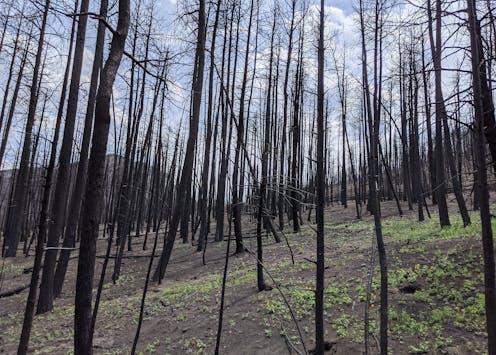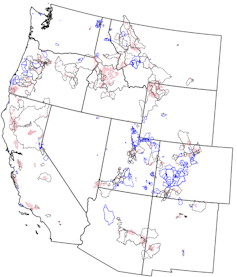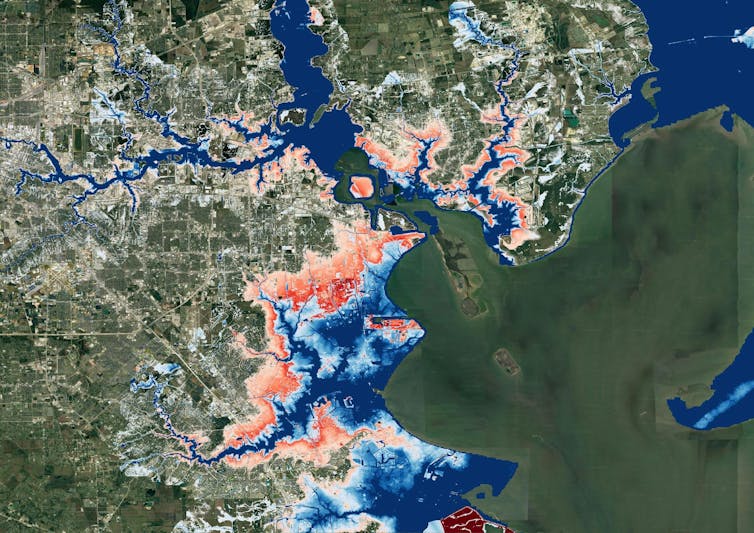Source: The Conversation – Canada – By Andy Hira, Professor of Political Science, Simon Fraser University
Canadian Prime Minister Mark Carney has made establishing east-west energy corridors a priority for Canada. He suggested that such corridors would include new oil and natural gas pipelines, designed to reduce dependence on the United States.
Energy and Natural Resources Minister Tim Hodgson has gone even further in pushing for subsidization of carbon capture and storage projects that would effectively underwrite the long-term continuation of the fossil fuel industry at taxpayer expense.
While there might be short-term political reasons for backing fossil fuels, such an approach goes against Canada’s long-term interests. Prioritizing fossil fuels undermines the country’s commitments to reduce emissions and takes away the investment needed for it to realize its potential to become a green energy superpower.
Creating energy corridors is in the national interest, and would allow Canada to take full advantage of its abundant and diverse energy and mineral resources. The government also needs to be involved, as the corridors are interprovincial and will require substantial investment. However, the government has limited resources and so Canada must think strategically about its priorities for such corridors.
Canadian taxpayers should not be subsidizing an already lucrative oil and gas industry. Instead, the federal government should prioritize funding clean energy supply solutions.
Oil and gas subsidies
Canadian governments have long faced opposition to building new pipelines. The provinces of Québec and British Columbia and many First Nations have strongly opposed new pipeline proposals. More recently, there is some signs of softening under the duress of U.S. tariffs.
Even if such shifts are lasting, it’s for the private sector to step up and invest into these projects. Previous federal investments, such as the Trans Mountain pipeline (TMX), were reflections of the private market’s unwillingness to invest in pipelines because they are bad investments. The 2024 Parliamentary Budget Office report estimated that selling the TMX would result in a loss.
There are reasons to question the soundness of fossil fuels on a purely financial basis. A 2022 Parliamentary budget office report found that climate change reduced GDP by 0.8 per cent in 2021, or around $20 billion. This number is expected to rise to 5.8 per cent per year by 2100 (or $145 billion in 2021 dollars).
By contrast, from 2017 to 2021, federal, provincial and territorial governments received an average of $12 billion annually in revenues from the the oil and gas industry.
The gap between the costs and benefits is only going to increase over time. The costs cut across all aspects of life, including food security, health care, global instability and threats to coastal cities due to sea level rise.
On the other hand, every dollar invested in adaptation today has an estimated return of $13-$15.
Furthermore, a recent study indicates a likely glut in global natural gas markets, and the future prospects for oil are equally questionable. For example, one of Canada’s target markets, Japan, has been reselling its liquefied natural gas imports to other countries, suggesting the glut of oil and gas is likely to continue as cheaper producers, including those in the Middle East and Southeast Asia, who are cheaper and closer to consumers, flood the market.
Cheaper and closer oil producers are also flooding markets in anticipation of declining prices.
There are important opportunity costs of investing money in fossil fuels that could otherwise be invested in the clean energy economy. When new technologies arise, there is a limited window of opportunity for global competitors to enter into an emerging industry.
In light of the shift to electric vehicles, heat pumps and artificial intelligence, it’s clear that energy demand is bound to increase significantly in Canada in the coming years. Canada can become a global competitor, but only if it enters the race now, while the window is open.
An East-West clean energy system
Solar and wind prices have declined by 83 per cent and 65 per cent respectively since 2009. However, they suffer from the fundamental issue of intermittency; the sun is not always shining and the wind isn’t always blowing.
While battery prices are declining, they remain an expensive solution. An easier solution is at hand: Canada’s hydroelectric resources. Québec, B.C. and Manitoba have abundant hydro resources that can reduce energy costs throughout the rest of the country.
Alberta and Saskatchewan have potential for significant geothermal power generation. Ontario and the Atlantic provinces could contribute wind and solar. Trading electricity through an integrated national grid increases the investment capital and reduces the need for batteries while diversifying the energy mix.
But we need an east-west electricity market to make this happen.
An east-west grid would reduce the need for every province to run its own power generation system. Creating a pooled market would allow provinces to trade electricity, giving consumers more choice and investors a larger market and potential return on their investment.
More valuable still is the fact that electricity capacity has to be built for the few peak hours and seasons. But most of the time demand is well below full capacity, such as the middle of the night or early summer, when neither heat nor air conditioning is needed in many areas. As peak times and seasons vary across the country, Canada can reduce overall costs by trading the electricity in the lowest cost producing province at a given time to where it’s needed in the other.
By locating some of the new clean energy in First Nations, Canada can also move reconciliation forward. There is potential for a win-win situation whereby Canada increases renewable energy generation while creating new jobs and income for First Nations wherever feasible.
The first step is for regulatory reform across the provinces to support a Canada-wide electricity market, and to provide the funding for the massive infrastructure investment required to connect provincial grids. This would be a federal investment with incredible long-term payoffs for employment, taxpayers and future generations.
Following this plan could truly make Canada an energy superpower on the right side of the energy transition, create thousands of jobs and give the country a global competitive edge — all while helping to save the planet in the process.
This article was co-authored by energy consultant Sheldon Fernandes.
![]()
The authors do not work for, consult, own shares in or receive funding from any company or organisation that would benefit from this article, and have disclosed no relevant affiliations beyond their academic appointment.
– ref. Canada’s proposed east-west energy corridors should prioritize clean energy – https://theconversation.com/canadas-proposed-east-west-energy-corridors-should-prioritize-clean-energy-259530
















